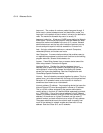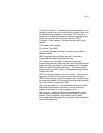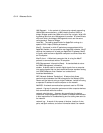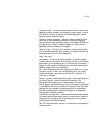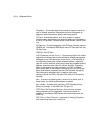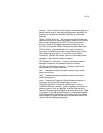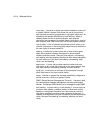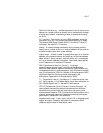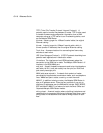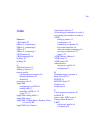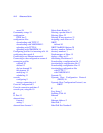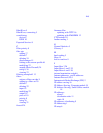GL-18 Reference Guide
TFTP (Trivial File Transfer Protocol/Internet Protocol): A
protocol used to transfer files between IP nodes. TFTP is often used
to transfer firmware and configuration information from a UNIX
computer acting as a TFTP server to an IP networking device, such
as the Netopia ISDN Router.
thicknet: Industry jargon for 10Base-5 coaxial cable, the original
Ethernet cabling.
thinnet: Industry jargon for 10Base-2 coaxial cable, which is
thinner (smaller in diameter) than the original Ethernet cabling.
Trunk Line: A communications line connecting two frame relay
switches to each other.
UDP (User Datagram Protocol): A TCP/IP protocol describing how
packets reach applications in destination nodes.
U interface: The interface on local ISDN equipment where the
connection to the ISDN line is made. The Netopia ISDN Router’s U
interface is its ISDN (WAN) port.
wall jack: A small hardware component used to tap into telephone
wall cable. An RJ-11 wall jack usually has four pins; an RJ-45 wall
jack usually has eight pins.
WAN (wide area network): A network that consists of nodes
connected by long-distance transmission media, such as telephone
lines. WANs can span a state, a country, or even the world.
WAN IP: In addition to being a router, the Netopia ISDN Router is
also an IP address server. There are four protocols it can use to
distribute IP addresses over the WAN which include: DHCP, BOOTP,
IPCP and MacIP. WAN IP is a feature for both the Small Office and
Corporate Netopia ISDN Router models.
wiring closet: A central location where a building’s telephone and
network wiring is connected. Multi-story buildings often have a main
wiring closet in the basement and satellite wiring closets on each
floor.



